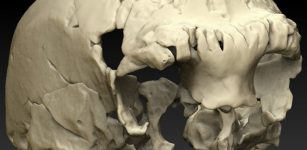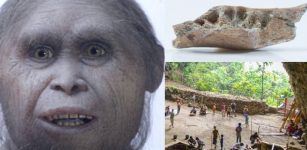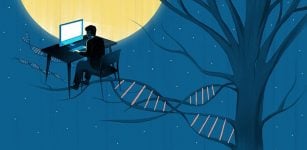Neanderthal DNA Still Influence Modern Human Genes – Scientists Say
MessageToEagle.com – Everyone living outside of Africa today has a small amount of Neanderthal in them. The last Neanderthal died 40,000 years ago, but much of their genome lives and contribute to certain traits in modern humans.
The impact of Neanderthals’ genetic contribution has been uncertain, but scientists have now discovered evidence that Neanderthal DNA sequences still influence how genes are turned on or off in modern humans.
Researchers now report evidence that Neanderthal DNA sequences still influence how genes are turned on or off in modern humans. Neanderthal genes’ effects on gene expression likely contribute to traits such as height and susceptibility to schizophrenia or lupus, the researchers found.
One of the major problems when investigating how Neanderthals’ genes affect modern humans is the lack of material. DNA can be extracted from fossils and sequenced, but RNA cannot. Without this source of information, scientists cannot be certain if Neanderthal genes functioned differently than their modern human counterparts.
The option is to look to gene expression in modern humans who possess Neanderthal ancestry.
Scientists have previously found correlations between Neanderthal genes and traits such as fat metabolism and depression.
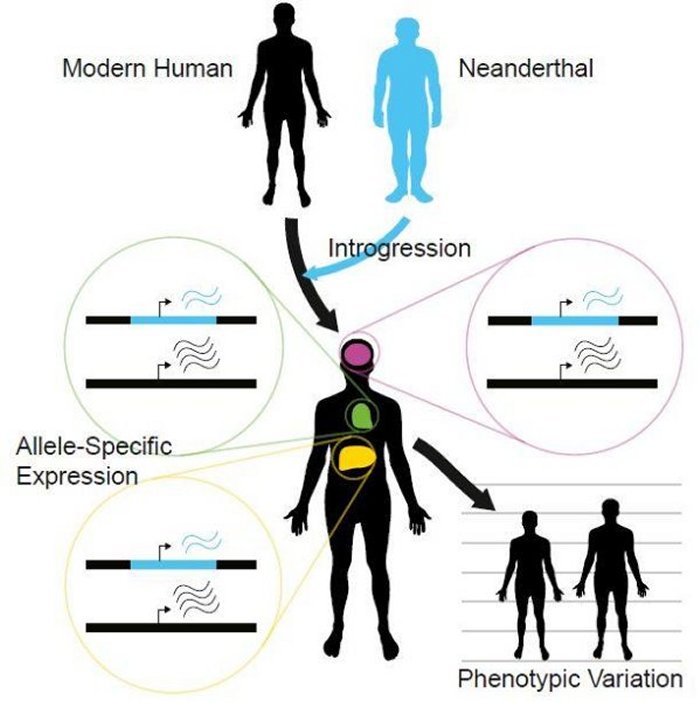
Credit: McCoy et al./Cell 2017
A new study now reveals that Neanderthal genes also contribute to traits such as height and susceptibility and susceptibility to schizophrenia or lupus.
One example uncovered by this study is a Neanderthal allele of a gene called ADAMTSL3 that decreases risk of schizophrenia, while also influencing height.
See also:
World’s Oldest DNA Of An Unknown Human Ancestor Could Rewrite Our History
Ancient DNA Reveals Dramatic Population Change In Europe From 45,000 To 7,000 Years Ago
“Previous work by others had already suggested that this allele affects alternative splicing. Our results support this molecular model, while also revealing that the causal mutation was inherited from Neanderthals,” said postdoctoral researcher Rajiv McCoy from the University of Washington School of Medicine.
Alternative splicing refers to a process in which mRNAs are modified before they leave the cell’s nucleus. When the Neanderthal mutation is present, the cell’s machinery removes a segment of the mRNA that is expressed in the modern human version. The cell ends up making a modified protein because of a single mutation from a Neanderthal ancestor.
The connection between that modified protein, height, and schizophrenia still requires more investigation, but it’s an example of how small differences between modern humans and Neanderthals can contribute to variation in people.
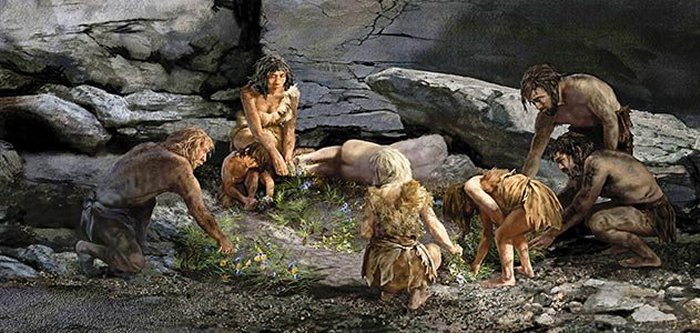
“Even 50,000 years after the last human-Neanderthal mating, we can still see measurable impacts on gene expression,” said geneticist and study co-author Joshua Akey of the University of Washington School of Medicine.
“And those variations in gene expression contribute to human phenotypic variation and disease susceptibility.”
The mysterious disappearance of Neanderthals has puzzled scientists a very long time. Neanderthals thrived in Europe for several hundred thousand years, but they mysteriously died out about 30,000 years ago. It was during this period that modern humans arrived in Europe.
Some scientists have suggested modern humans out-competed or outright killed the Neanderthals. However, new genetic evidence provides support for another theory: Perhaps our ancestors made love, not war, with their European cousins, and the Neanderthal lineage disappeared because it was absorbed into the much larger human population.
Next, researchers will investigate whether Denisovans, another species of hominins that crossbred with modern humans are contributing to gene expression.
MessageToEagle.com
Expand for references
Rajiv C. Mccoy, Jon Wakefield, Joshua M. Akey. Impacts of Neanderthal-Introgressed Sequences on the Landscape of Human Gene Expression. Cell, 2017 DOI: 10.1016/j.cell.2017.01.038


